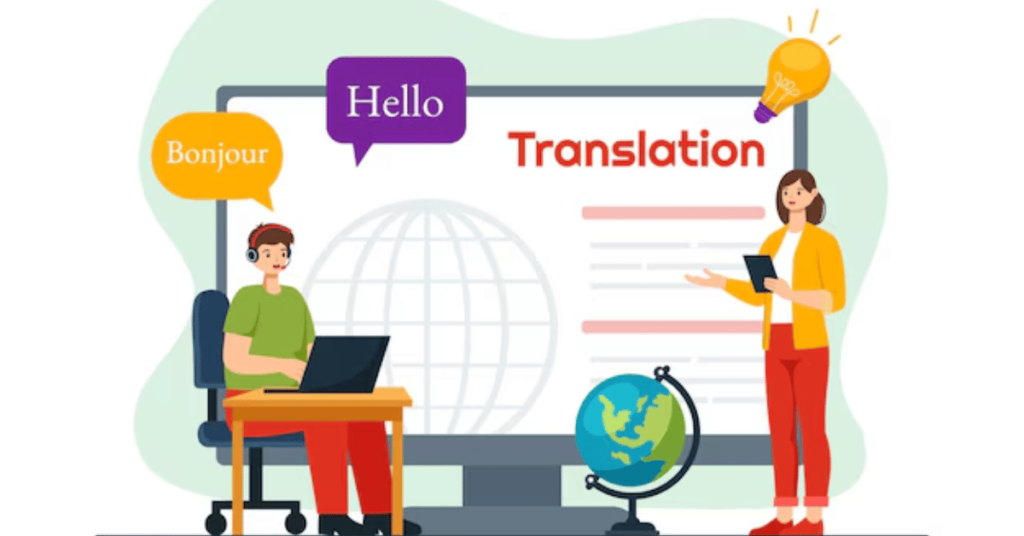In an era where global communication is more critical than ever, the ability to bridge linguistic gaps seamlessly is paramount. Kääntäjäö represents a transformative leap in translation technology, leveraging advanced innovations to revolutionize how languages are translated and understood. This article delves into the essence of Kääntäjäö, exploring how it integrates cutting-edge technology to enhance translation processes, its impact on global communication, and the future implications of its advancements.
Understanding Kääntäjäö
Kääntäjäö is a term that signifies an advanced approach to translation, characterized by the integration of sophisticated technology to improve accuracy, efficiency, and contextual relevance. Unlike traditional translation methods, which often rely heavily on human input and are subject to limitations in handling complex linguistic nuances, Kääntäjäö employs modern technological solutions to address these challenges.
Key Features of Kääntäjäö:
- Advanced Algorithms: Kääntäjäö utilizes state-of-the-art algorithms to process and translate text with a high degree of accuracy. These algorithms are designed to handle diverse linguistic structures and adapt to various contexts.
- Contextual Understanding: One of the core strengths of Kääntäjäö is its ability to understand and preserve context. This includes recognizing idiomatic expressions, cultural references, and the intended tone of the original text.
- Real-Time Translation: The technology enables real-time translation, making it possible to facilitate instant communication across languages. This is particularly valuable in fast-paced environments such as international business and diplomatic negotiations.
- Machine Learning and AI: Kääntäjäö incorporates machine learning and artificial intelligence to continuously improve translation quality. These technologies enable the system to learn from previous translations and adapt to evolving language usage.
The Evolution of Translation Technology
To appreciate the impact of Kääntäjäö, it’s important to understand the evolution of translation technology:
- Early Translation Methods: Traditional translation methods relied on manual processes, including human translators and bilingual dictionaries. While effective, these methods were time-consuming and limited in their ability to handle large volumes of text or complex linguistic nuances.
- Computer-Assisted Translation (CAT): The advent of CAT tools introduced automation to the translation process. These tools provided features such as translation memory and terminology databases, which improved efficiency but still required significant human input.
- Machine Translation (MT): Machine translation systems, such as Google Translate, automated the translation process further by using statistical models and rule-based approaches. While these systems provided faster translations, they often struggled with accuracy and context.
- Neural Machine Translation (NMT): The introduction of NMT marked a significant advancement, using neural networks to improve translation quality. NMT systems are capable of understanding context and producing more natural-sounding translations.
How Kääntäjäö Works
Kääntäjäö builds on the advancements of NMT and further integrates several key technologies:
- Deep Learning Algorithms: Kääntäjäö employs deep learning algorithms to analyze and translate text. These algorithms are capable of understanding complex linguistic patterns and generating translations that maintain the original meaning and tone.
- Contextual Awareness: By incorporating contextual analysis, Kääntäjäö ensures that translations are not only accurate but also relevant to the intended message. This includes recognizing cultural nuances and idiomatic expressions.
- Multi-Language Support: Kääntäjäö supports a wide range of languages, allowing users to translate between numerous language pairs. This broad support is facilitated by extensive language data and advanced processing capabilities.
- Real-Time Processing: The system’s ability to provide real-time translation is achieved through efficient processing and high-speed data handling. This feature is essential for applications requiring immediate communication.
- Continuous Learning: Kääntäjäö continuously learns from new data and user interactions. Machine learning algorithms enable the system to refine its translation models and improve accuracy over time.
Applications of Kääntäjäö
The advanced capabilities of Kääntäjäö have wide-ranging applications across various domains:
- Business and Commerce:
- International Trade: Kääntäjäö facilitates smooth communication in international trade by providing accurate translations of contracts, negotiations, and marketing materials.
- Customer Support: Businesses can offer multilingual customer support with real-time translation, enhancing customer satisfaction and expanding their reach.
- Diplomacy and International Relations:
- Negotiations and Agreements: In diplomatic settings, Kääntäjäö supports clear and precise communication, helping to bridge language barriers in negotiations and agreements.
- Cultural Exchange: The technology promotes cultural exchange by enabling effective communication between individuals and organizations from different linguistic backgrounds.
- Travel and Tourism:
- Travel Assistance: Kääntäjäö assists travelers by providing real-time translation of travel documents, signage, and local interactions, improving their overall experience.
- Tourism Promotion: Tourism organizations can use Kääntäjäö to create multilingual promotional materials and engage with a global audience.
- Healthcare and Medicine:
- Patient Communication: Kääntäjäö ensures accurate translation of medical information, patient instructions, and health records, improving patient care in multilingual settings.
- Medical Research: Researchers can access and translate scientific literature in various languages, facilitating collaboration and knowledge sharing.
- Media and Entertainment:
- Content Localization: Media companies can use Kääntäjäö to localize films, TV shows, and online content, making them accessible to international audiences.
- Subtitling and Dubbing: The technology supports accurate and contextually relevant subtitling and dubbing, preserving the original content’s intent and emotional impact.
Benefits of Kääntäjäö
Kääntäjäö offers several advantages over traditional translation methods:
- Enhanced Accuracy: The integration of advanced algorithms and contextual analysis improves translation accuracy, reducing errors and misunderstandings.
- Increased Efficiency: Real-time translation capabilities streamline communication processes, saving time and resources for users across various industries.
- Cultural Sensitivity: By recognizing cultural nuances and idiomatic expressions, Kääntäjäö ensures that translations are culturally appropriate and resonate with the target audience.
- Scalability: The technology supports a wide range of languages and can handle large volumes of text, making it suitable for global applications.
- Continuous Improvement: Machine learning algorithms enable Kääntäjäö to continuously improve translation quality, adapting to evolving language usage and user needs.
Challenges and Considerations
Despite its many benefits, Kääntäjäö also faces certain challenges:
- Complexity of Languages: Some languages have complex grammatical structures and cultural contexts that may pose challenges for accurate translation.
- Data Privacy: Handling sensitive information in translations requires robust data privacy measures to protect user data and comply with regulations.
- Contextual Limitations: While Kääntäjäö excels in many areas, capturing the full context of highly specialized or nuanced content can still be challenging.
- Human Touch: Certain aspects of translation, such as emotional nuance and cultural subtleties, may still require human intervention to ensure the highest quality.
Future Implications of Kääntäjäö
The continued development of Kääntäjäö and similar technologies will have significant implications for the future of translation and global communication:
- Global Collaboration: Enhanced translation capabilities will facilitate greater collaboration between individuals and organizations across linguistic boundaries, promoting innovation and knowledge sharing.
- Cross-Cultural Understanding: Improved translation technology will contribute to greater cross-cultural understanding and empathy, fostering international relationships and cooperation.
- Advancements in AI: Ongoing advancements in artificial intelligence and machine learning will further enhance translation accuracy and contextual relevance, expanding the potential applications of Kääntäjäö.
- Integration with Other Technologies: Future developments may see Kääntäjäö integrated with other emerging technologies, such as augmented reality and virtual reality, to provide immersive and interactive translation experiences.
Conclusion
Kääntäjäö represents a transformative advancement in translation technology, leveraging cutting-edge algorithms, contextual understanding, and real-time processing to bridge linguistic gaps and enhance global communication. By focusing on accuracy, efficiency, and cultural sensitivity, Kääntäjäö is revolutionizing how languages are translated and understood. As technology continues to evolve, the principles and capabilities of Kääntäjäö will play a crucial role in fostering effective communication and collaboration in an increasingly interconnected world. Embracing these advancements will not only improve translation quality but also contribute to a more inclusive and communicative global community.







